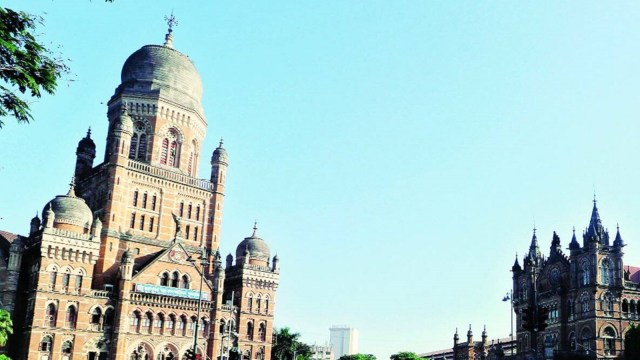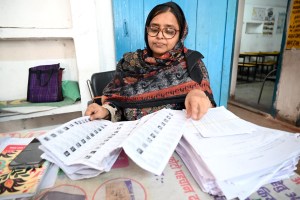Flooding in City: BMC plans to widen drainage system in Mumbai and improve carrying capacity of pumps at HindMata
Plans to widen the existing drainage system in Mumbai
 Officials said that instead of carrying out large-scale widening works, the civic body is also looking towards implementing local level intervention to improve the smooth flow of water.
Officials said that instead of carrying out large-scale widening works, the civic body is also looking towards implementing local level intervention to improve the smooth flow of water.
A day after several parts of Mumbai got inundated owing to the incessant rainfall, the Brihanmumbai Municipal Corporation (BMC) administration Wednesday said that they are now targeting interventions at local level to mitigate flooding woes in Mumbai at the municipal ward level.
Between August 16 and August 19, Mumbai recorded 940 mm of rainfall. Consequently, several areas, including the Hind Mata junction where the BMC had carried out a flood mitigation drive four years ago by spending Rs 150 crore also got inundated leading to stoppage of vehicle flow.
Speaking to The Indian Express, Abhijit Bangar, Additional Municipal Commissioner (Projects) said that now the administration is mooting a proposal to increase the capacity of these pumps.
He said that over the past six days, all the six pumping stations in Mumbai, along with the additional 540 dewatering pumps that were installed, had been functional continuously, yet several locations in the city got inundated during the rains.
“Today, these pumping stations are equipped to counter a capacity of 55-60 mm of hourly rainfall. However, over the last six days, we have recorded instances where hourly rainfall was recorded between 150 mm and 200 mm. At Hind Mata, there is a holding pond where the accumulated rain water is stored during the time of flooding. The water is transferred to the pond by dewatering pumps,” Bangar told the Indian Express.
“Now our target is to increase the carrying capacity of these pumps so that the quantum of water that gets transferred into the tank in a given time is much more than its current capacity. Once we implement this the speed of discharge will be much more resulting in quicker drainage of accumulated water,” he added.
The pumping station at Hind Mata became operational in 2022.
There are seven pumps installed at the space with a current capacity of being able to channel 3,000 cubic meters of water every hour.
“Three years ago when this pumping station became operational the cases of adverse climate conditions were not regular. But at present, Mumbai is witnessing above normal rainfall very frequently and the city’s vulnerability has increased. Therefore we need to expand our infrastructure to be future ready,” he added.
Besides this, the BMC has also mooted an idea to widen the existing drainage network at Gandhi Market along with several other locations in Mumbai.
Civic officials said that out of the total flooding spots in Mumbai a larger number of flooding spots remain in the island city.
Therefore the need for widening the drains in island city is of utmost importance to the civic authorities. The BMC will appoint a dedicated agency like the IIT or VJTI for carrying out a survey of these drains and to determine the margin by which each of the drains will be widened.
Officials said that instead of carrying out large-scale widening works, the civic body is also looking towards implementing local level intervention to improve the smooth flow of water.
“Since the population and demography of the city have changed drastically in the past decades the quantum of waterflow has also increased. Meanwhile, the pattern of rainfall has also recorded a massive change in the past few years due to which we are witnessing frequent incidents where a large quantity of rainfall is happening within a short period of time. Therefore, there is a need now to widen the existing width of the drains,” Bangar added.
Mumbai has a vast network of drains nullahs, with 261.52 km of major nullahs (over 1.5 meters wide) and 411.56 km of minor nullahs (less than 1.5 meters wide), along with other types of drains like arch and roadside drains, the overall network of drains in Mumbai stand at around 3,800 km.
These nullahs play a key role in the drainage system of the city. The origin of these drains date back to the colonial era in the middle of the 20th century.







